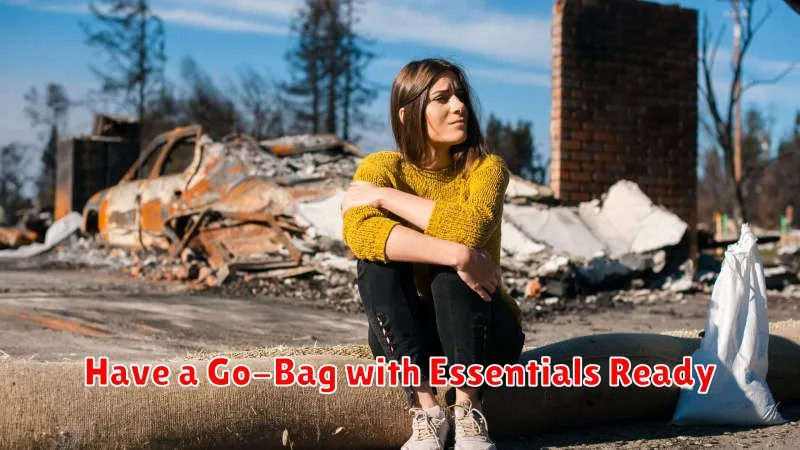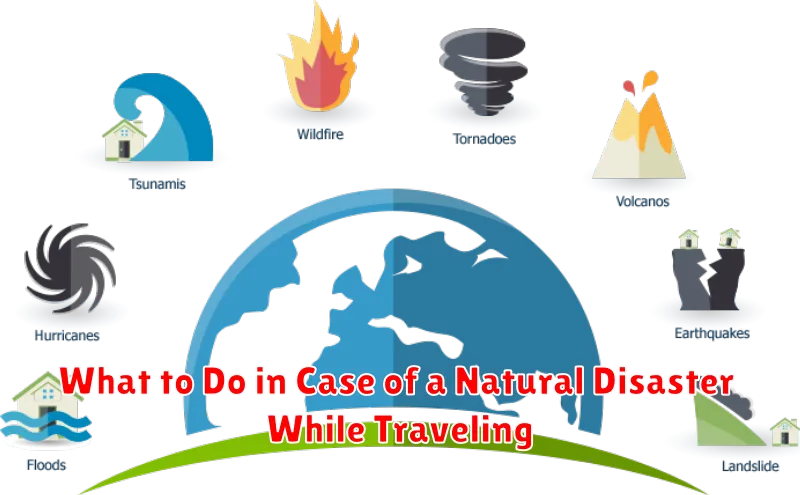Traveling offers incredible opportunities for exploration and relaxation. However, it’s crucial to be prepared for unforeseen circumstances, particularly natural disasters. While you can’t predict when or where a natural disaster might strike, you can take steps to mitigate risks and ensure your safety should you encounter one while traveling. Understanding what to do in case of a natural disaster while traveling is paramount to a safe and enjoyable trip. This article will provide essential guidance on preparing for and responding to various natural disasters, including earthquakes, tsunamis, hurricanes, wildfires, and volcanic eruptions while traveling. Whether you are planning an international trip or a domestic getaway, understanding the necessary precautions can make all the difference in ensuring your well-being in the face of a natural disaster.
Planning ahead is the most important factor in managing a natural disaster while traveling. From packing a well-stocked emergency kit to researching your destination’s specific risks and developing a communication plan, preparation is key to navigating these challenging situations. This article will outline essential steps for pre-trip planning, actions to take during a natural disaster, and essential information to consider for post-disaster recovery. We’ll discuss the importance of travel insurance, registering with your embassy (if traveling internationally), and understanding local warning systems. By being proactive and informed, you can significantly reduce your vulnerability and increase your resilience in the event of a natural disaster while traveling.
Know Your Destination’s Risk Zones
Before embarking on your trip, research your destination’s susceptibility to natural disasters. Understanding the potential risks, whether it’s earthquakes, hurricanes, floods, or wildfires, allows for better preparation.
Resources like government websites, meteorological agencies, and international organizations often provide risk assessments and historical data. Identify specific areas prone to certain hazards. For example, coastal regions are more vulnerable to hurricanes and tsunamis, while mountainous areas might be at higher risk for landslides or avalanches.
Pay attention to evacuation routes and emergency shelters in your chosen area. Knowing this information in advance can save valuable time in a crisis. Consider the time of year and its associated risks. Hurricane season, monsoon season, or periods of increased seismic activity are crucial factors to weigh when planning your travels.
Sign Up for Local Alerts and Updates
Staying informed about potential hazards is crucial when traveling. Register for local emergency alerts upon arriving at your destination. Many areas offer text or email alert systems that provide real-time updates on weather events, evacuations, and other emergencies. This allows you to react quickly and appropriately to changing situations.
Download weather apps that offer location-based notifications. These apps can provide advanced warnings of severe weather, which is particularly important if you are in an unfamiliar area. Consider enabling push notifications for these apps so you receive immediate updates.
Familiarize yourself with local news outlets and their websites or social media presence. Local news sources often provide detailed information specific to the region you are visiting, supplementing national alerts. They can be a valuable resource for understanding the specific impacts of a disaster on your area.
Have a Go-Bag with Essentials Ready

A crucial aspect of disaster preparedness while traveling is having a readily accessible go-bag. This bag should contain essential items you’ll need in case of an emergency evacuation. Pack it with items that will help you survive for at least 72 hours.
Essential items for your go-bag include: a first-aid kit, a flashlight with extra batteries, a portable phone charger, a multi-tool or knife, non-perishable food items (such as energy bars), and bottled water. Consider packing a whistle to signal for help, a small amount of cash, and copies of important documents in a waterproof bag.
Customize your go-bag based on your specific needs. If you have any medications, ensure you have enough to last for several days. A change of clothes, basic toiletries, and a small blanket are also recommended. Keep your go-bag easily accessible in your hotel room or vehicle.
Follow Local Authority Instructions

In the event of a natural disaster, adhering to instructions issued by local authorities is paramount. These officials possess up-to-the-minute information regarding the specific dangers and appropriate safety measures. Heed evacuation orders immediately and without hesitation.
Local authorities will provide guidance on safe locations and necessary supplies. Pay close attention to emergency broadcasts on radio and television, or official announcements via social media channels if available. These updates offer critical information for your safety and well-being during the crisis.
Cooperate with emergency personnel and follow their directions. They are trained to manage disaster situations and prioritize public safety. By following their instructions, you contribute to a more organized and effective response, ultimately increasing your chances of remaining safe.
Be aware that communication systems may be disrupted during a natural disaster. If possible, establish a pre-arranged meeting point with your travel companions in case you become separated. Having a designated location improves the chances of reunification amidst the chaos.
How Travel Insurance Can Help
When a natural disaster interrupts your travels, travel insurance can be a crucial safety net. It can provide financial protection and essential assistance during a stressful and potentially dangerous situation.
Trip cancellations or interruptions due to natural disasters are often covered, allowing you to recoup prepaid, non-refundable trip costs like flights and accommodations. If your trip is cut short, you may receive reimbursement for the unused portion of your trip.
Travel insurance can also cover emergency medical expenses if you are injured during a natural disaster. This includes evacuation to a safe location or appropriate medical facility if necessary. Some policies also cover lost or damaged luggage, which can be especially valuable if your belongings are affected by the disaster.
Many policies offer 24/7 emergency assistance services, which can be invaluable during a crisis. These services can help you with things like finding temporary accommodation, rebooking flights, contacting your embassy, and communicating with family back home.
Before purchasing travel insurance, carefully review the policy details to understand the specific coverage provided, including any exclusions or limitations related to natural disasters. Understanding your policy is vital to ensure you have the appropriate protection for your trip.
Stay Connected with Family Back Home
In the event of a natural disaster, contacting family and friends can be challenging. Prioritize establishing communication to assure them of your safety and obtain updates on their well-being.
Before departing on your trip, establish a communication plan. Designate a central point of contact, such as a family member or friend, who everyone can reach out to. Share this individual’s contact information with everyone in your travel group and back home.
If phone lines are down, consider utilizing text messaging or social media platforms. These often remain operational even when cellular networks are congested. Pre-download messaging apps that function without internet access, if available.
Carry a portable charger to keep your devices powered up, especially if electricity is disrupted. Conserve battery power by limiting non-essential communication. If possible, register with your country’s embassy or consulate upon arrival at your destination. They can provide assistance in emergency situations, including contacting your family.
Evacuation Tips and Embassy Contacts
In the event of a natural disaster requiring evacuation, stay calm and follow instructions given by local authorities. Locate your passport, identification, and essential medications immediately. Keep these items readily accessible.
If possible, contact your embassy or consulate as soon as it is safe to do so. They can provide critical assistance, including information regarding evacuation routes, temporary shelters, and repatriation flights. They can also help replace lost or damaged travel documents.
Register with your embassy before or upon arrival in a foreign country, especially if traveling to a region prone to natural disasters. This preemptive measure makes it easier for your government to locate and assist you during an emergency.
Be aware of your physical surroundings during an evacuation. Stay informed about designated evacuation routes and assembly points. Follow instructions from emergency personnel and avoid unnecessary risks.

